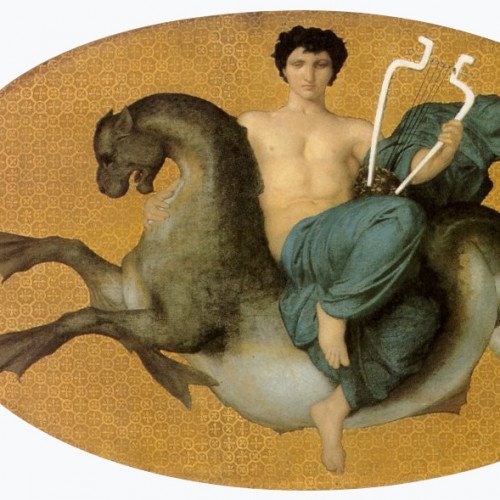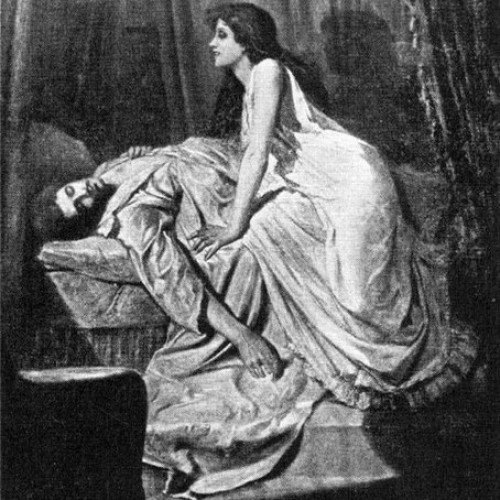Arion (mythology) VS Vampire

Arion (mythology)
In Greek mythology, Arion or Areion (Ancient Greek: 'Ἀρίων, Ἀρείων, is a divinely-bred, fabulously fast, black-maned horse. He saved the life of Adrastus, king of Argos, during the war of the Seven against Thebes.Arion was (by most accounts) the offspring of Poseidon and Demeter. When the goddess Demeter was searching for her daughter Persephone, she was pursued by Poseidon. To escape Poseidon, Demeter turned herself into a mare and hid among the mares of Oncius, king of Thelpusa in Arcadia. But Poseidon turned himself into a stallion and mated with Demeter, producing Arion. Other accounts had Arion as the Offspring of Gaia (Earth), or of Zephyrus and a Harpy.Arion was given to the hero Heracles who rode Arion into battle during his expedition to Elis, and also during his combat with Ares' son Cycnus. Later Heracles gave Arion to Adrastus, the king of Argos. Adastus took Arion with him on the disastrous expedition of the Seven against Thebes. On the way to Thebes, Arion competed and finished first in the first Nemean Games. At Thebes, when the battle was lost, Arion quickly spirited his master Adrastus away from the battlefield, saving his life, when all the other leaders of the expedition were killed.
Statistics for this Xoptio

Vampire
A vampire is a creature from folklore that subsists by feeding on the vital essence (generally in the form of blood) of the living. In European folklore, vampires are undead creatures that often visited loved ones and caused mischief or deaths in the neighborhoods they inhabited while they were alive. They wore shrouds and were often described as bloated and of ruddy or dark countenance, markedly different from today's gaunt, pale vampire which dates from the early 19th century. Vampiric entities have been recorded in most cultures; the term vampire was popularized in Western Europe after reports of an 18th-century mass hysteria of a pre-existing folk belief in the Balkans and Eastern Europe that in some cases resulted in corpses being staked and people being accused of vampirism. Local variants in Eastern Europe were also known by different names, such as shtriga in Albania, vrykolakas in Greece and strigoi in Romania. In modern times, the vampire is generally held to be a fictitious entity, although belief in similar vampiric creatures such as the chupacabra still persists in some cultures. Early folk belief in vampires has sometimes been ascribed to the ignorance of the body's process of decomposition after death and how people in pre-industrial societies tried to rationalize this, creating the figure of the vampire to explain the mysteries of death. Porphyria was linked with legends of vampirism in 1985 and received much media exposure, but has since been largely discredited.The charismatic and sophisticated vampire of modern fiction was born in 1819 with the publication of "The Vampyre" by the English writer John Polidori; the story was highly successful and arguably the most influential vampire work of the early 19th century. Bram Stoker's 1897 novel Dracula is remembered as the quintessential vampire novel and provided the basis of the modern vampire legend, even though it was published after fellow Irish author Joseph Sheridan Le Fanu's 1872 novel Carmilla. The success of this book spawned a distinctive vampire genre, still popular in the 21st century, with books, films, television shows, and video games. The vampire has since become a dominant figure in the horror genre.